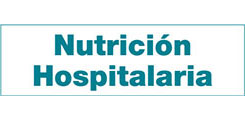Trabajo Original
The effect of defatted cocoa powder on cholesterol-induced changes of serum lipids in rats
Mousa Numan Ahmad, Amira Mohammad Amr
 Número de descargas:
3302
Número de descargas:
3302
 Número de visitas:
8410
Número de visitas:
8410
 Citas:
4
Citas:
4
Compártelo:
Introduction: Cocoa has been known for many health benefits, but its lipid-lowering activity still remains unresolved.Objectives: To investigate effects of varying amounts of defatted cocoa on serum lipids in cholesterol-fed rats. Methods: Forty-eight male Sprague-Dawley rats were randomly assigned into four cholesterol-free (control) and four cholesterol-supplemented (experimental) diets containing 0, 1, 2 or 3% defatted cocoa (DC) and given ad libitumto the rats for ten weeks. Serum total cholesterol (TC), low- and very low-density lipoprotein cholesterol (LDL-C and VLDL-C), high-density lipoprotein cholesterol (HDL-C) and triglycerides (TG) were quantified, atherogenic index (AI) was calculated, and other biological parameters were assessed.Results: Food intake and body weight did not respond to DC. Compared to 0% DC, 3% DC had the most prominent effect on serum lipids inducing significant fall in LDL-C and TG, and rise in TC/TG in cholesterol-deprived rats, and increase in VLDL-C and AI, and decrease in HDL-C in cholesterol-fed rats. Compared to cholesterol-deprived rats, 3% DC caused significant rise in VLDL-C, AI and TC/TG, and fall in TG in cholesterol-fed rats. This lipid-modifying effect was markedly substantiated by corresponding linear trend responses to DC. Differences in lipid variables of rats fed on DC diets were less evident.Conclusions: Results suggest that, in contrast to cholesterol-free situations, defatted cocoa is seemingly incapable of counteracting the atherogenic effect of cholesterol in rats, perhaps in an interaction that is likely to have clinical implications in cardiometabolic conditions.
Palabras Clave: Defatted cocoa. Cholesterol. Dyslipidemia. Cardiometabolic risks. Rats.
Artículos más populares
Revisión: Inteligencia artificial generativa ChatGPT en nutrición clínica: avances y desafíos
ChatGPT y otras herramientas de inteligencia artif...
Revisión: Suplementación con micronutrientes y sus beneficios: ¿por qué y cuándo?
Introducción: los micronutrientes participan en la...
-
Licencia creative commons: Open Access bajo la licencia Creative Commons 4.0 CC BY-NC-SA
https://creativecommons.org/licenses/by-nc-sa/4.0/legalcode




